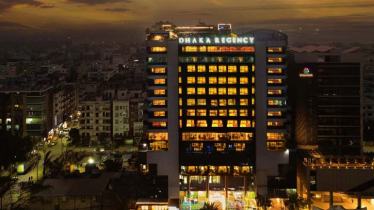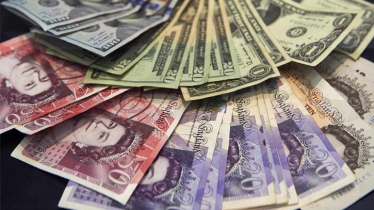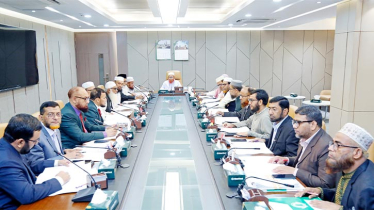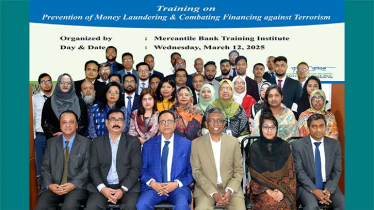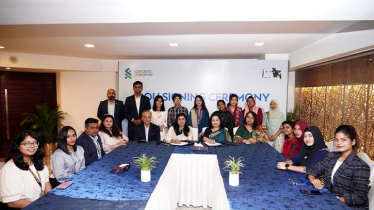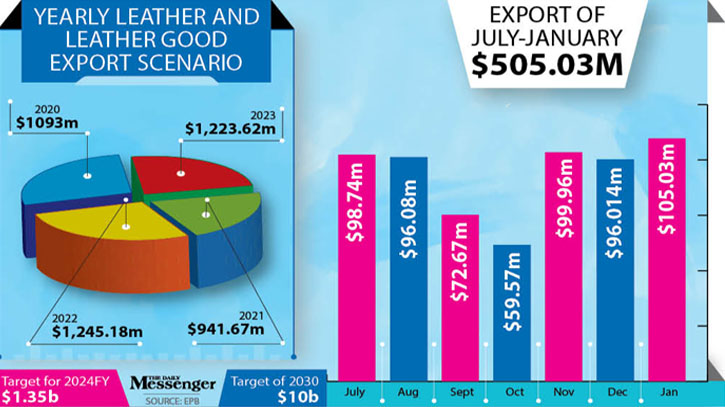
Photo: Messenger
Exports of leather and leather goods from Bangladesh witnessed a modest rise of 6 percent during the first seven months of the fiscal year 2023–'24.
Experts and industry insiders said this growth can be attributed to a slight uptick in demand for these products in the international market, despite the prevailing challenges like the inflation in the global economy.
According to the data, the export figures for leather and leather goods were $98.74 million in July, $96.08 million in August, $72.67 million in September, $59.57 million in October, $99.96 million in November, $96.01 million in December, and $105.03 million in January.
The sector had set an ambitious target of $1.35 billion for leather and leather goods exports in the fiscal year 2024. Additionally, exporters are aiming for a larger goal of $10 billion in exports by the year 2030.
Syed Nasim Manzur, the Managing Director of Apex Footwear Ltd., emphasised the importance of government policy support for the sector's growth and told The Daily Messenger that subsidies for backward linkage sectors could significantly contribute to the expansion of the industry.
Former president of the Leather Goods and Footwear Manufacturers and Exporters Association of Bangladesh (LFMEAB), Belal Hossain, told The Daily Messenger, “Some challenges are faced by the sector, and approximately 40 percent of companies out of 155 have ceased exporting due to various complaint issues. Additionally, the absence of a clear policy on rawhide collection and inadequate facilities at the newly relocated Savar tannery compound are pressing concerns that require government attention.”
Khondaker Golam Moazzem, research director of the Centre for Policy Dialogue (CPD), expressed optimism regarding the trajectory of exports, saying, "As the world economy gradually becomes more stable, exports are increasing in all sectors. I think in the second half of the current fiscal year, exports will increase more.”
The data reveals a significant growth in exports of leather and leather goods, which reached $1,245.18 million in the fiscal year 2022, compared to $941.67 million in 2021 and $1,093 million in 2020.
Industry insiders anticipate that if the current export growth trend continues, it could reach $1.5 billion by the end of the fiscal year.
Bangladesh possesses 2 percent of the world’s total livestock population and has the capacity to fulfil 1 percent of the global demand for leather.
Key markets for Bangladeshi leather, leather goods, and footwear products include Germany, Italy, France, the Netherlands, Spain, Russia, Brazil, Japan, China, the UK, Singapore, Poland, the US, Canada, and Taiwan.
Previously, exports heavily relied on wet blue leather. Wet blue leather, made by separating fur from the skin and preserving it with salt, was a significant export item.
However, there's an impression that says further processing of raw leather to produce finished goods could increase the value of leather products by up to 90 percent.
Messenger/Disha



